Throughout its history, Volkswagen has consistently surprised the automotive world with vehicles that perform beyond expectations. From dominating rally racing circuits to offering exceptional value in everyday driving, Volkswagen’s lineup includes several models that have defied the odds. This article explores ten remarkable examples of Volkswagens that have punched well above their weight class, showcasing the brand’s ability to deliver performance, innovation, and value in unexpected packages.
mod@tech
Volkswagen has a storied history of producing special edition models that cater to diverse tastes and commemorate significant milestones. These unique variants often remain under the radar, even for dedicated automotive enthusiasts. Exploring these rare editions offers a glimpse into Volkswagen’s innovative spirit and commitment to delivering distinctive driving experiences.
Over the past several years, there have been two major trends in the SUV market. One is the increased popularity of models that are ready to splash through and climb over the great outdoors (or at least look as if they are). The other is the broader availability of three-row SUVs, a range which includes the 2025 Toyota Grand Highlander Hybrid Nightshade.
Customer demand for three rows of seats led to the creation of the Cadillac XT6, Subaru Ascent, and the Lexus RXL. The latter model no longer exists, but the TX can be seen as its functional successor. Jeep applied the same treatment to its Grand Cherokee, which was previously always a two-row rig, to make the Grand Cherokee L. More than a decade after Jeep discontinued the unloved Commander, it (finally!) released an all-new Wagoneer and the more upscale Grand Wagoneer for the 2022 model year.
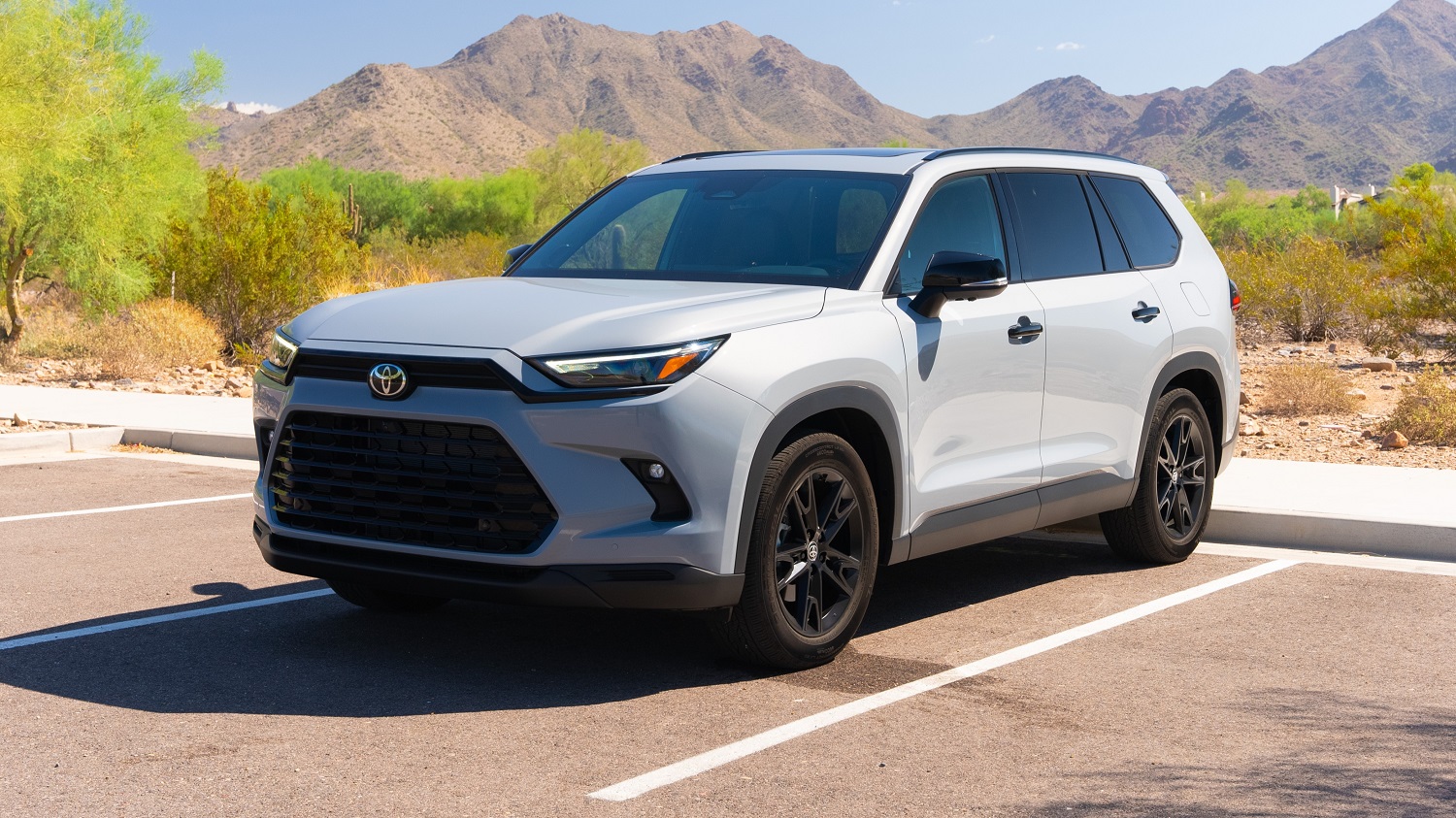
The Highlander has been a part of Toyota’s lineup since the early 2000s. Its three-row Grand Highlander sibling is one of the more recent additions to the three-row SUV segment, having entered the market as a 2024 model. For 2025, Toyota added a value-focused LE trim level and, as it’s done with many of its vehicles in the past, a Nightshade variant. Based on the Limited model, the Grand Highlander Hybrid Nightshade has a starting price of $52,610 and comes standard with LED daytime running lights and fog lamps, power folding mirrors, 20-inch wheels, leather interior with heated/ventilated front seats and heated second-row seats, 12.3-inch screens for the gauges and infotainment system, and 11-speaker JBL audio system. The Nightshade model blacks out the exterior trim and the wheels, and locks in a Black leather interior with Matte Gray Metallic door trim panels and standard second-row captain’s chairs. My test vehicle was equipped with the optional Panoramic View Monitor, Panoramic Roof, wheel locks, and carpet floor and cargo mats, which raised its as-tested price to $56,818.
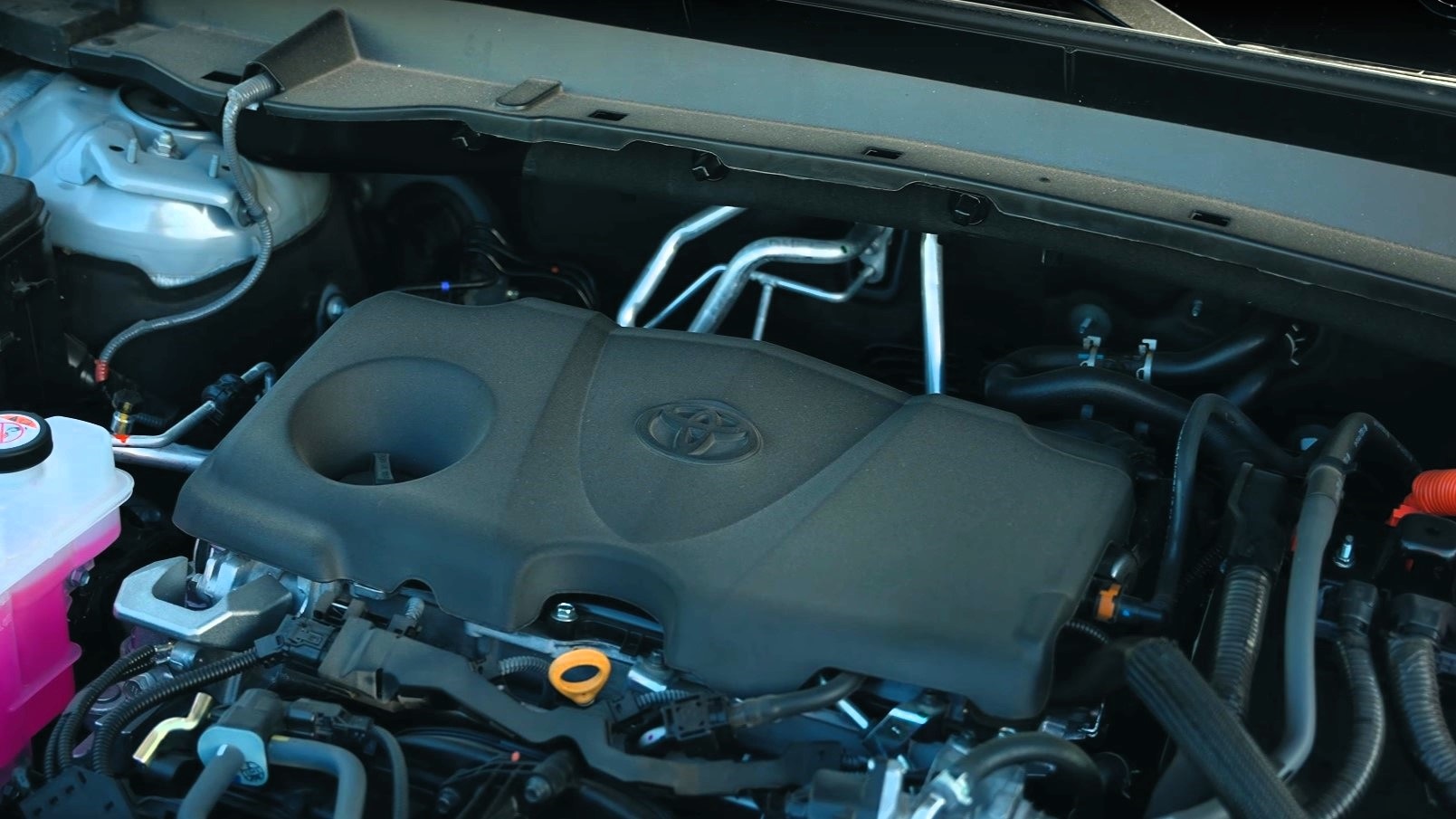
Toyota offers two gas/electric versions of the Grand Highlander: the base hybrid setup and the more powerful Hybrid Max configuration. The Nightshade is exclusively powered by the milder combo, which consists of a 2.5-liter DOHC four-cylinder engine, permanent magnet synchronous electric motor, and 5-Ah nickel–metal hydride battery pack. Net output is 245 horsepower and 175 lb-ft of torque. An ECVT transmission and an electronic on-demand all-wheel drive system, which engages the rear axle’s electric motor when more traction is needed, convert those numbers into forward motion.
On the road, the Grand Highlander was predictable and pleasant, though not stimulating. There were no surprises to it, good or bad. I didn’t expect it to feel athletic, so I wasn’t let down by the brake pedal’s stiffness and lack of feel. The hybrid power plant delivered adequate acceleration, but the coarse sound of the I4 implied it wasn’t happy about doing it—perhaps that explains the fuel economy. According to the EPA, the Nightshade can return up to 36 mpg in the city, 32 on the highway, and 34 combined. My colleagues and I averaged a slightly disappointing 32.7 mpg over 407.5 miles.
Despite essentially being a stretched version of its sibling model, the Grand Highlander wasn’t ungainly. The combination of its Cement paint and Nightshade accents gave it a certain sleekness and brought to mind the 2025 Lexus TX 350 F Sport Handling I reviewed earlier this year.
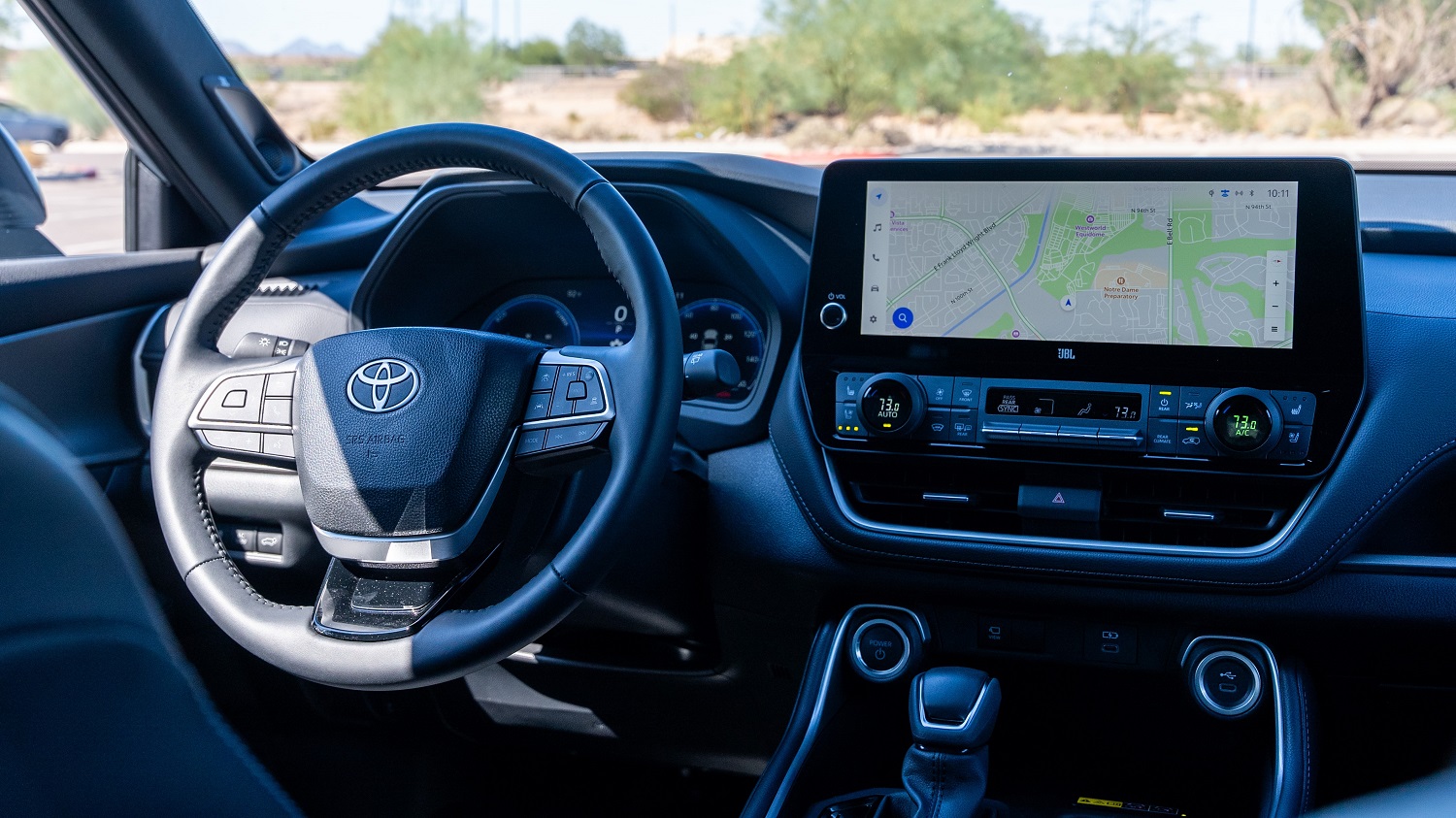
The largely black interior was less visually dynamic, but nicely equipped. The gauge and infotainment screens were generously sized, although the wireless Apple CarPlay connection kept dropping—an experience I’ve had in multiple Toyota test vehicles. Fortunately, the JBL audio and the HVAC systems had simple dials and buttons that were laid out well and easy to reach. Storage areas in the first row were abundant.
In the second row, the captain’s chairs could be manually slid, tilted, and folded. I didn’t have to make many adjustments to the one behind the driver’s seat to see that there was plenty of room for someone my five-foot-ten height. When my mother-in-law rode back there, she had the controls for her heated seat and the second-row climate zone, as well as various charging options, at her fingertips.
Not all three-row SUVs are built equal. Many of them have space in the very back that’s only fit for children. I had a feeling that that would be the case with the Grand Highlander, so I was pleasantly surprised to discover how roomy the reclining third row was. Although the height of the floor raised my knees slightly, I had enough legroom to sit behind the driver-side second-row captain’s chair after it was adjusted to my height. I also had plenty of headroom—something that was lacking in the larger 2025 Sequoia 1794 Edition.
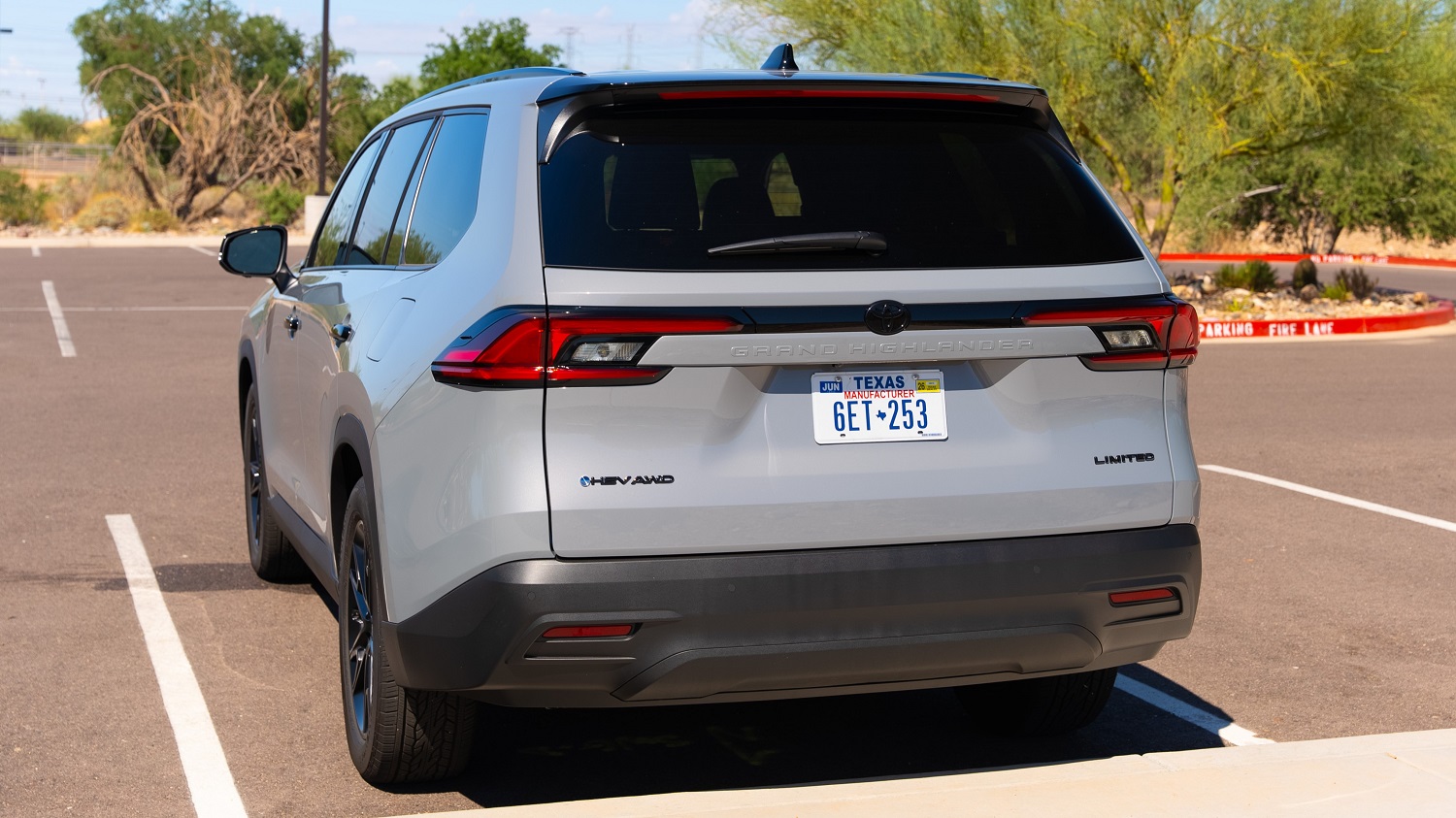
In a way, the Grand Highlander is a “trendy” vehicle, but Toyota’s choice to follow the trend of three-row SUVs led it to making something functional, not purely fashionable. The Grand Highlander is a three-row SUV sized for everyone, whether it’s a family with small children or a group of adult friends.
My colleague Luke Lamendola also drove the 2025 Toyota Grand Highlander Hybrid Nightshade, so check out his video review below.
Click above and watch our full video review on YouTube!
This video is sponsored by Legendary Car Protection. Car ownership today comes with high expectations and high risks. A well-designed Vehicle Service Contract not only protects your finances, but also ensures your vehicle receives the care it deserves – no matter how iconic, rare, or routine it may be. To explore tailored protection options for your specific vehicle, visit LegendaryCarProtection.com.
Throughout its history, Volkswagen has consistently surprised the automotive world with vehicles that perform beyond expectations. From dominating rally racing circuits to offering exceptional value in everyday driving, Volkswagen’s lineup includes several models that have defied the odds. This article explores ten remarkable examples of Volkswagens that have punched well above their weight class, showcasing the brand’s ability to deliver performance, innovation, and value in unexpected packages.
In the late 1990s, Volkswagen stunned the automotive world with the W12 concept, a mid-engine supercar that showcased the brand’s engineering prowess. This vehicle featured a 5.6-liter W12 engine, producing 414 horsepower, and boasted a top speed of 217 mph. Although it never entered full production, the W12 concept’s bold design and impressive performance left a lasting impression, influencing future models like the Bugatti Veyron. (motor1.com)
As classic car owners, we’re familiar with strangers approaching us at gas stations, eager to share stories about the ’67 Mustang their dad once owned or the ’69 Camaro they wish they’d never sold. We know the rumble of a well-tuned V8 firing to life on a Sunday morning, and the satisfaction of finally tracking down that elusive original part. Classic cars are time machines, conversation starters that bring enjoyment to owners and admirers alike, and are often the culmination of years of meticulous restoration work and weekend garage sessions.
Classic cars hold a special place in automotive culture, with unique values and considerations that deserve equally specialized attention. That’s where purpose-built classic car insurance makes all the difference, through coverage specifically designed for the collector car community.
Comprehensive Protection for Collector Vehicles
OpenRoad Insurance understands that classic cars live in a world of their own. While your daily driver might follow predictable depreciation curves, that pristine ’70s muscle car in your garage tells a different story entirely. OpenRoad Insurance has crafted its coverage specifically around these realities.
Agreed Value Coverage forms the cornerstone of OpenRoad Insurance’s approach. Instead of leaving your car’s worth to chance, you and OpenRoad Insurance establish its true value up front. This means considering everything that makes your classic special, from those matching numbers, the documented provenance, the quality of that frame-off restoration you completed last spring or even the historical significance of that particular model year. When you’re covered through agreed value, your meticulously maintained classic is valued as the automotive icon it is, not just as a vehicle that happens to be 55 years old. The difference matters, especially when you’ve invested countless hours ensuring every detail is period-correct.
Whether you’re working on a barn-find 911 or treating yourself to a professional rotisserie restoration, OpenRoad Insurance’s Vehicles Under Construction Coverage evolves with your project, with coverage reflecting your growing investment. And because any serious restoration requires serious tools, they’ll protect the equipment that makes quality work possible.
Beyond collector-specific protections, your classic car still needs coverage for everyday driving realities. OpenRoad Insurance provides all the essential coverage any vehicle requires, including collision protection, comprehensive coverage, plus liability and medical coverage that meets your state’s requirements.

Ease and Speed of Doing Business
OpenRoad Insurance was founded on the idea of making your experience as smooth as possible. Their team understands that classic car owners have busy lives between work, family, and weekend garage sessions, so they’ve built multiple touchpoints to serve you. Their online portal allows you to update your policy at any time. And if you prefer to discuss coverage options with someone who actually knows the difference between a numbers-matching 340 and a replacement block, their specialists are just a phone call away, with no lengthy hold times or endless phone trees.
This customer-first approach is shown in the feedback that OpenRoad Insurance receives. They maintain a perfect 5-star rating on Google Reviews, with customers consistently praising both their expertise and responsiveness. While industry satisfaction metrics often hover in mediocre territory, OpenRoad Insurance’s customer advocacy scores rank in the top tier.
One customer summed it up this way: “Simple to use, fast to get coverage and very affordable rates! Who wouldn’t recommend such a company!!” For many collectors, that combination of simplicity, speed and value shows why working with OpenRoad Insurance feels effortless and inspires confidence.
Maximum Value Without Compromise
OpenRoad Insurance recognizes the reality for those customers who don’t rack up miles daily driving their classic, and tailors their policies accordingly. Their specialized approach means you’re not paying daily-driver rates for a car that sees the road a fraction of the time. Instead, you get comprehensive protection that reflects your classic’s actual usage pattern — competitive pricing that doesn’t ask you to compromise on the coverage quality your investment deserves.
Protecting Your Point-of-Pride
Founded by car collectors for car collectors, OpenRoad Insurance makes every company decision, from coverage features to partnerships, with a collector’s benefit in mind. That’s why OpenRoad Insurance is the best investment for protecting a classic car. It’s not just a good price; it’s a smart one, too.
Explore OpenRoad Insurance’s classic car coverage, and partner with an insurance company that shares your commitment to protecting your special vehicle.
Volkswagen has long been celebrated for its practical and reliable vehicle designs, earning a reputation for producing cars that are both functional and accessible. However, in the hands of skilled tuners, these everyday models have been transformed into high-performance legends, showcasing the brand’s versatility and potential for innovation. This article explores ten remarkable Volkswagen vehicles that have undergone significant modifications, turning them into absolute monsters on the road. From enhanced powertrains to aggressive styling, these tuned Volkswagens redefine what is possible with the brand’s iconic models.
Third-generation Mercedes-Benz SLs are not exactly rare. Mercedes built more than 200,000 of them during the R107 model’s 1971-1989 lifecycle. But given the R107’s age, finding one with low miles can be difficult unless you know the right person. SLSHOP, an English business specializing in the service and restoration of Mercedes’ iconic roadsters, happened to know a man with an unregistered, 42-mile 1982 Mercedes-Benz 500 SL.
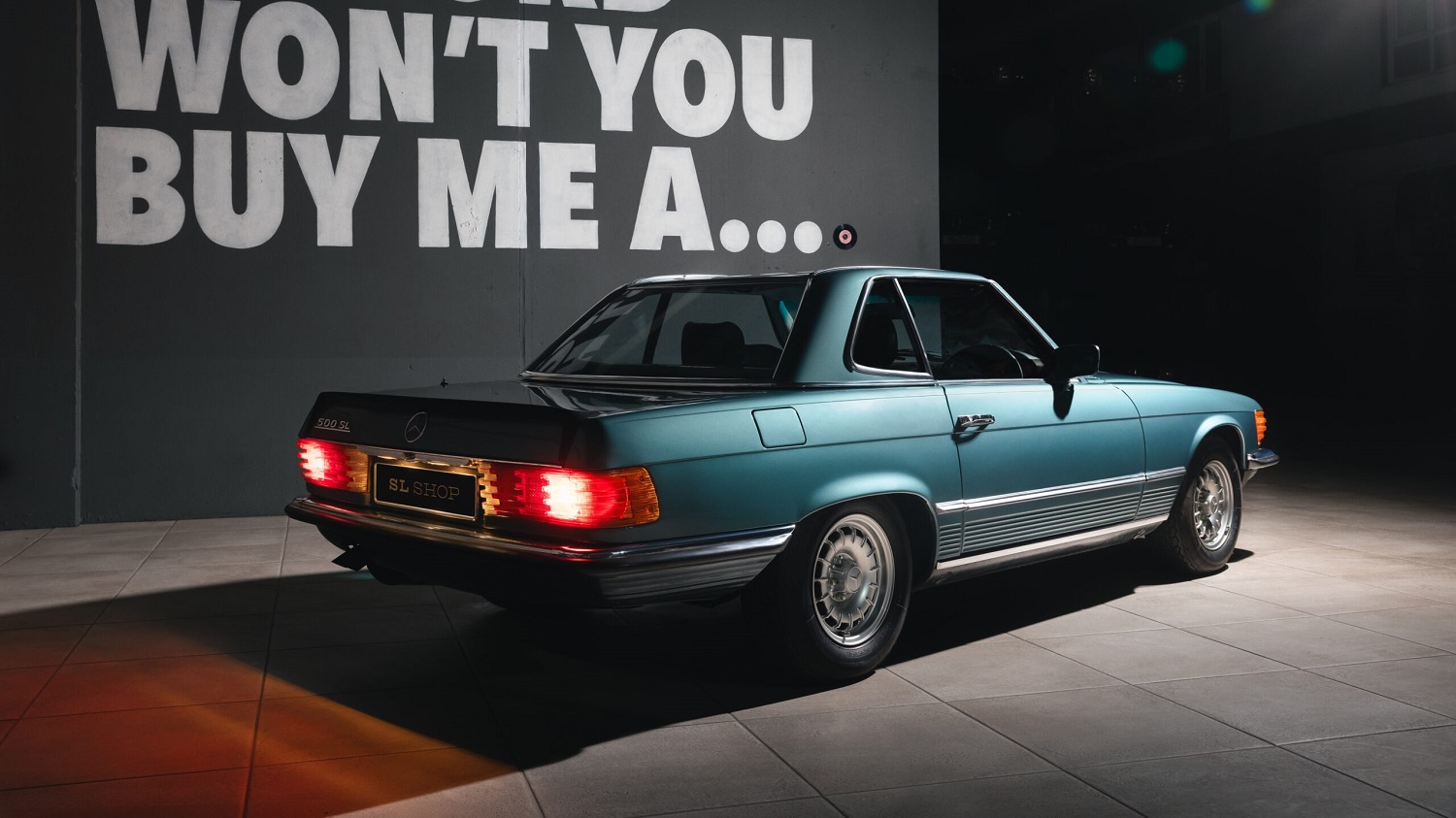
SLSHOP and the person who preserved the 500 SL, Mr. Hough, crossed paths more than 15 years ago at The Lancaster Insurance Classic Motor Show. He mentioned the ultra-low-mileage 500 SL that he had been keeping in his climate-controlled garage since 1982; of course, SLSHOP asked if he would be willing to sell it. He declined, but in August of this year, he changed his tune and reached out to SLSHOP to offer a shot at his time capsule of a car.
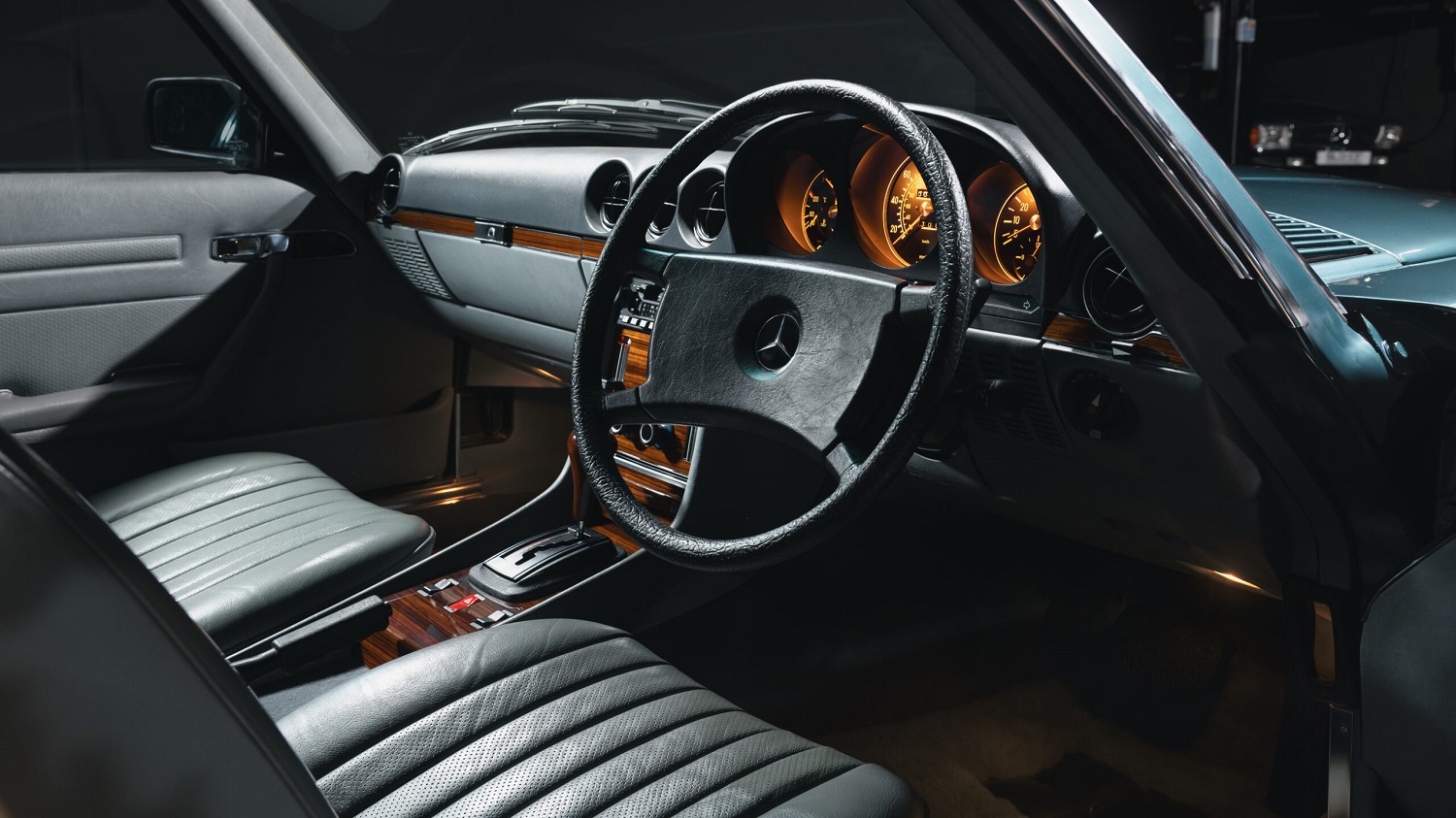
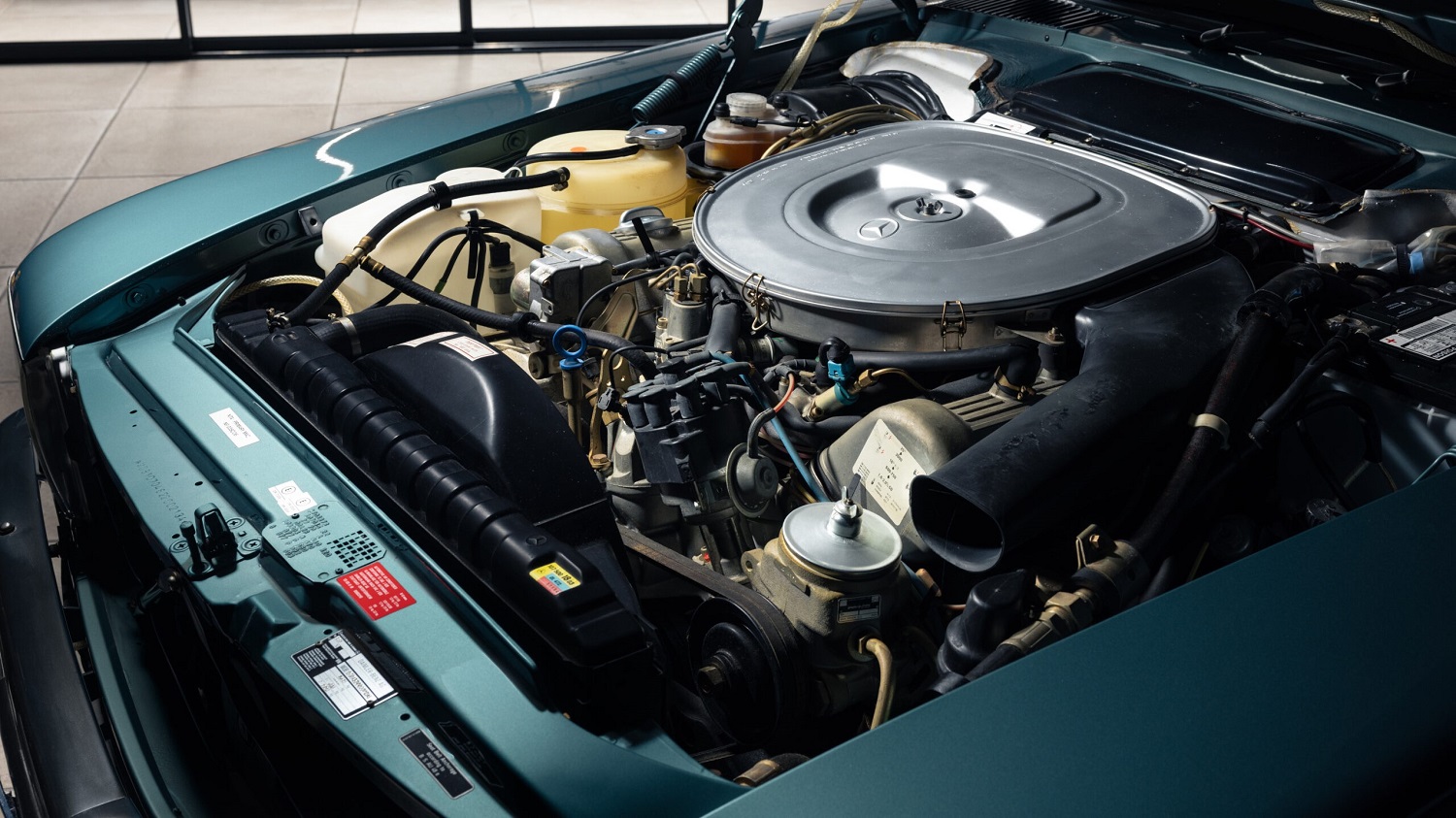
Like other R107s, the 500 SL is fairly common. According to the Mercedes-Benz Corporate Archive, the automaker produced 11,812 of them between April 1980 and August 1989. Those numbers aside, Mr. Hough’s SL was a singularity. The Metallic Blue-Green paint was untouched by the effects of sunlight. Inside, the leather still had its new-car smell. The SL even had its factory-applied Waxoyl in the engine bay around the 5.0-liter V8 and on the exhaust.
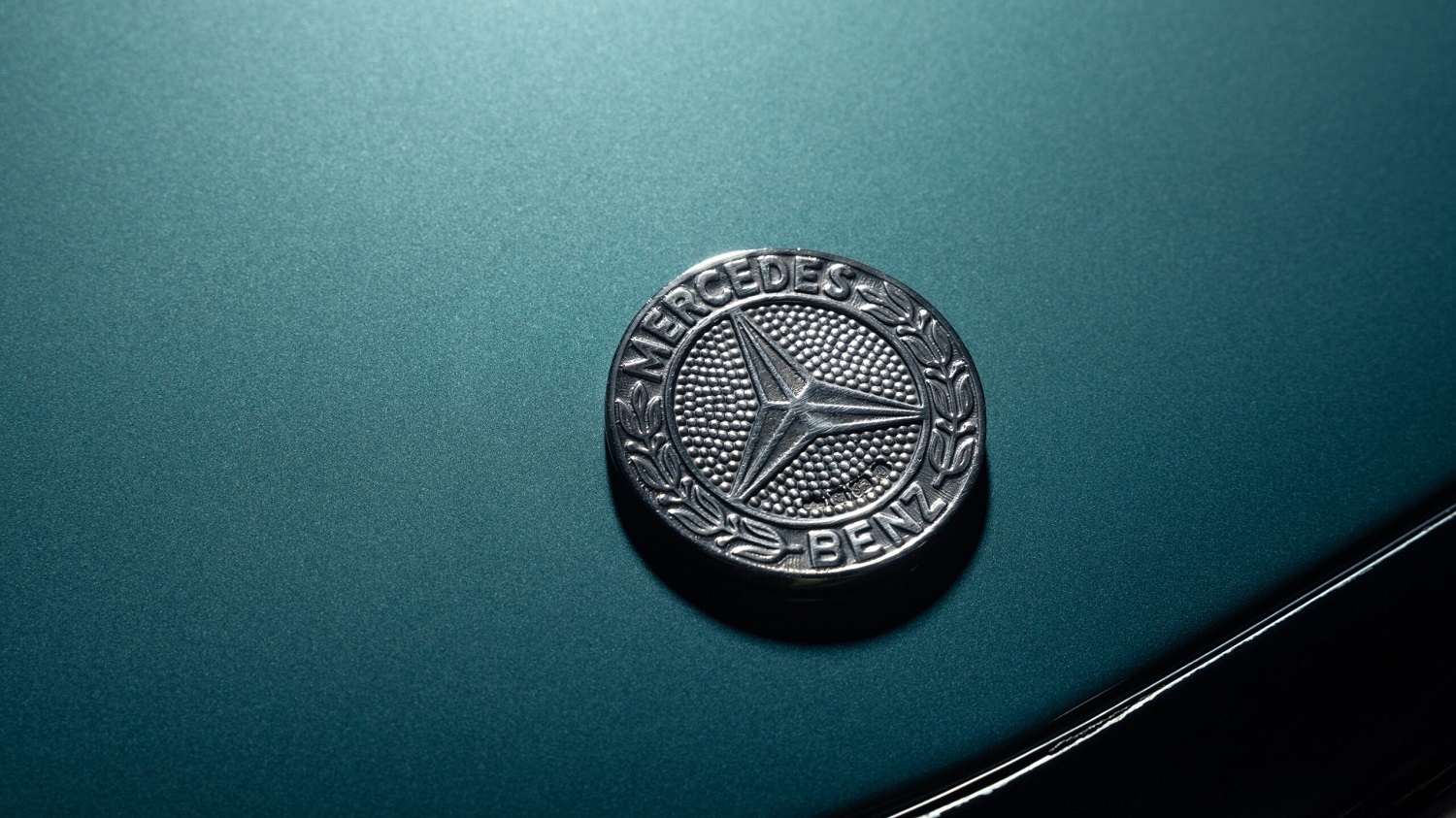
There was something that wasn’t original, though: the solid silver Mercedes badge on the nose, which Mr. Hough made himself. (Someone should make him a trophy for his dedication to preserving a piece of SL history.)
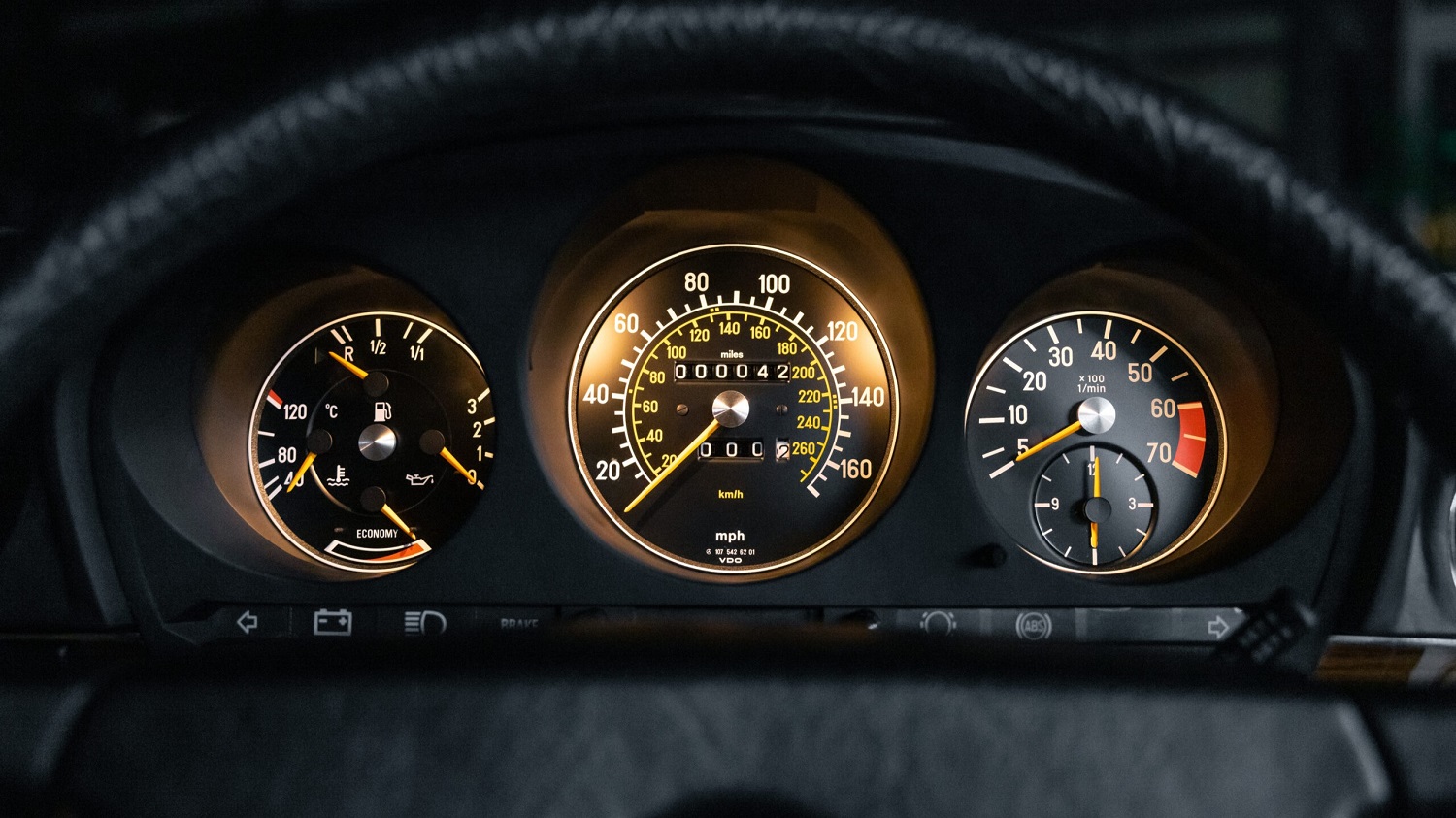
The good news is that the 500 SL is in good hands; the bad news is that if you want to buy it, you can’t. SLSHOP says, “We are committed to never offering this vehicle for sale. Instead, we are creating a permanent climate-controlled display here in Stratford-upon-Avon, where it will stand as a tribute to Mr. Hough’s vision and to the future of the classic car community.”
Step back in time and get ready to cruise in style. For countless enthusiasts, the 1957 Chevrolet is the crown jewel of Detroit’s golden age—a rolling symbol of American craftsmanship and chrome-clad confidence. And now, in this all-new ’57 Chevy Dream Giveaway, one lucky winner will bring home a restomod masterpiece built at a cost exceeding $400,000.
But here’s the catch—you only have until January 31, 2026, to enter this exclusive 120-day giveaway. Click here to enter now!
If you’ve ever watched jaw-dropping restomods cross the Barrett-Jackson auction block, you know what to expect: perfection. This ’57 Chevy isn’t a restoration—it’s a complete re-imagination. Every inch has been upgraded to deliver show-car looks and modern performance that’ll make your pulse race.
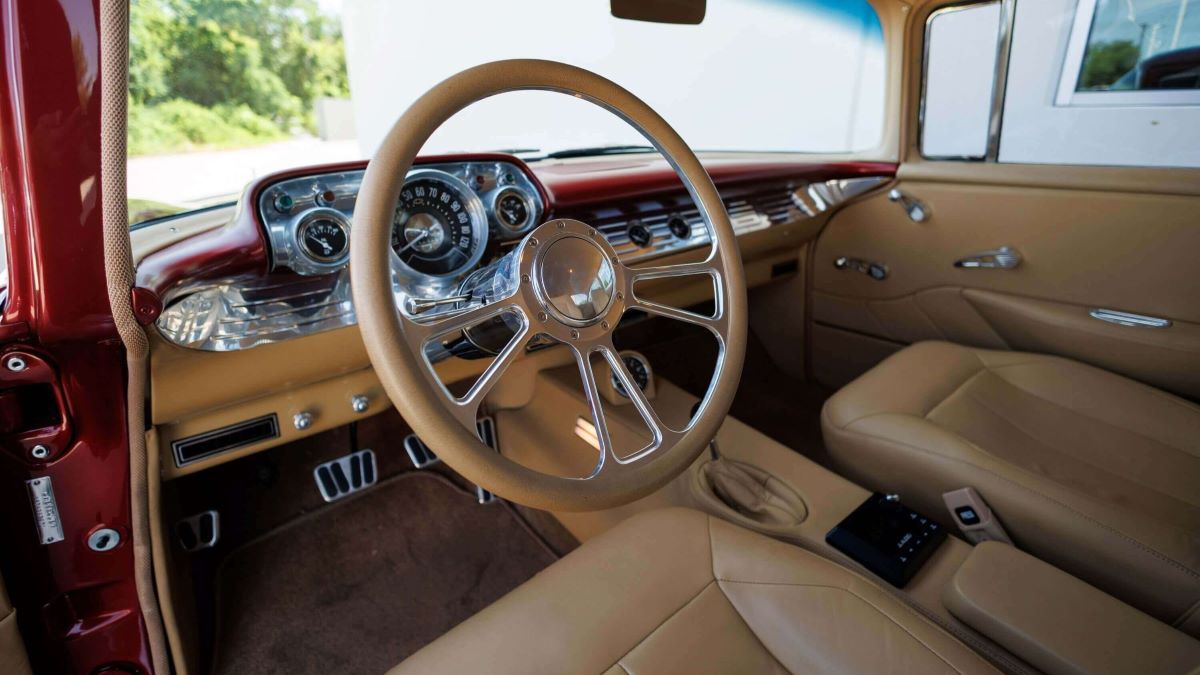
Bathed in a deep Red Fire Pearlcoat and finished with a hand-stitched Italian leather interior, this showpiece blends yesterday’s beauty with today’s power. Under the hood, a Chevrolet Performance 572ci big-block cranks out 620 horsepower, paired with a Richmond five-speed manual and a limited-slip 9-inch rear end for old-school control and new-school performance.
Modern touches—A/C, four-wheel disc brakes, power steering, custom gauges, tilt steering wheel and polished wheels wrapped in performance rubber—make this restomod as comfortable as it is powerful. Underneath, the Art Morrison Tri-5 GT Sport chassis delivers precision handling worthy of the world’s best builds.
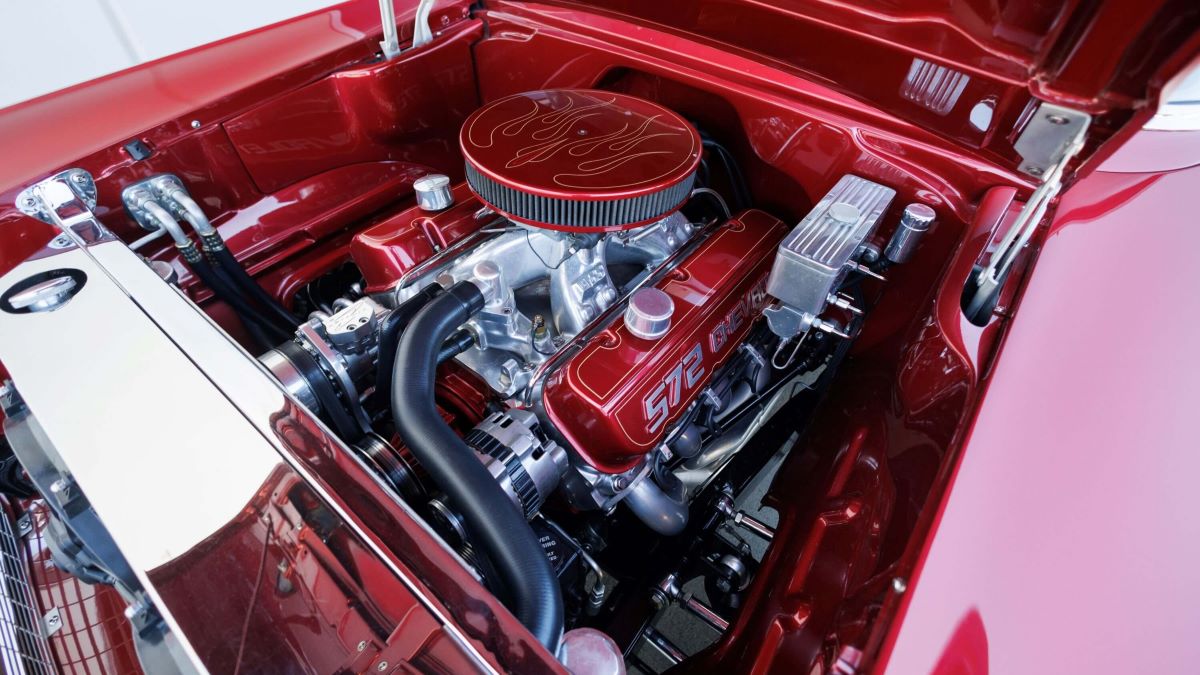
From its mirror-smooth Red Fire finish to the unmistakable fins that defined a generation, this ’57 Chevy stands as one of the finest Tri-Fives in America. It’s a build that belongs on the Barrett-Jackson stage, yet could be sitting in your garage instead.
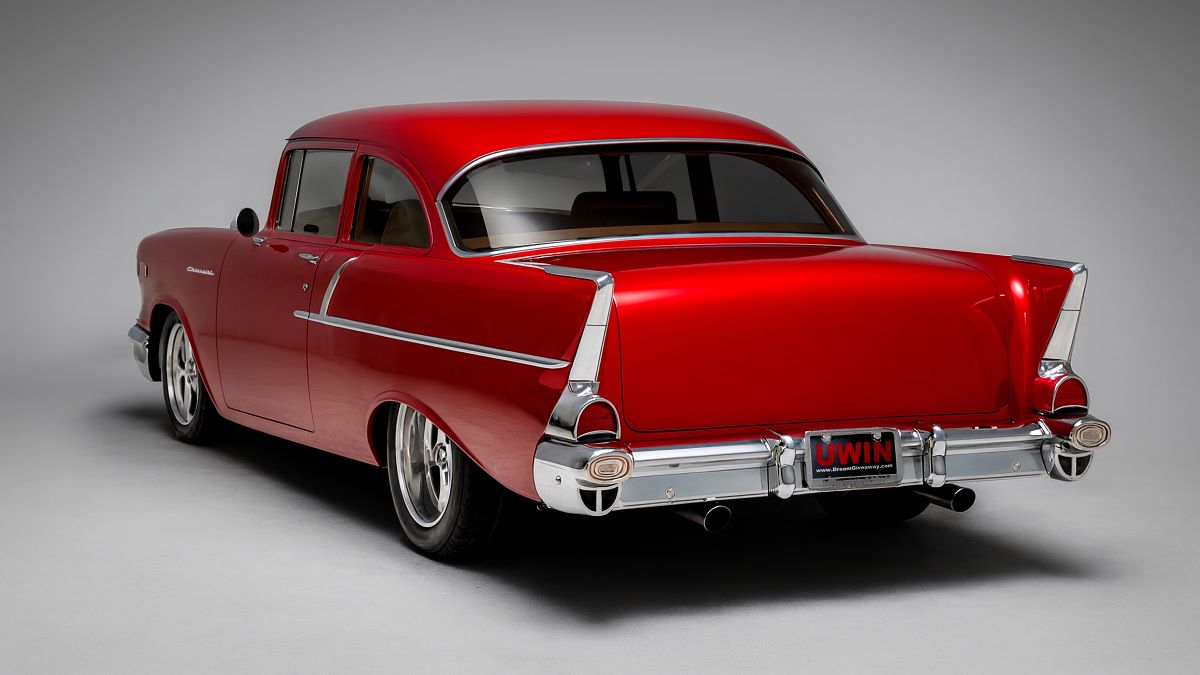
The Ultimate Tri-Five Restomod—One Lucky Winner
And here’s the best part: if you win, Dream Giveaway will cover $10,000 in prize taxes—so the keys are truly yours. Every entry you make supports veterans’ and children’s charities, turning your dream into hope for others.
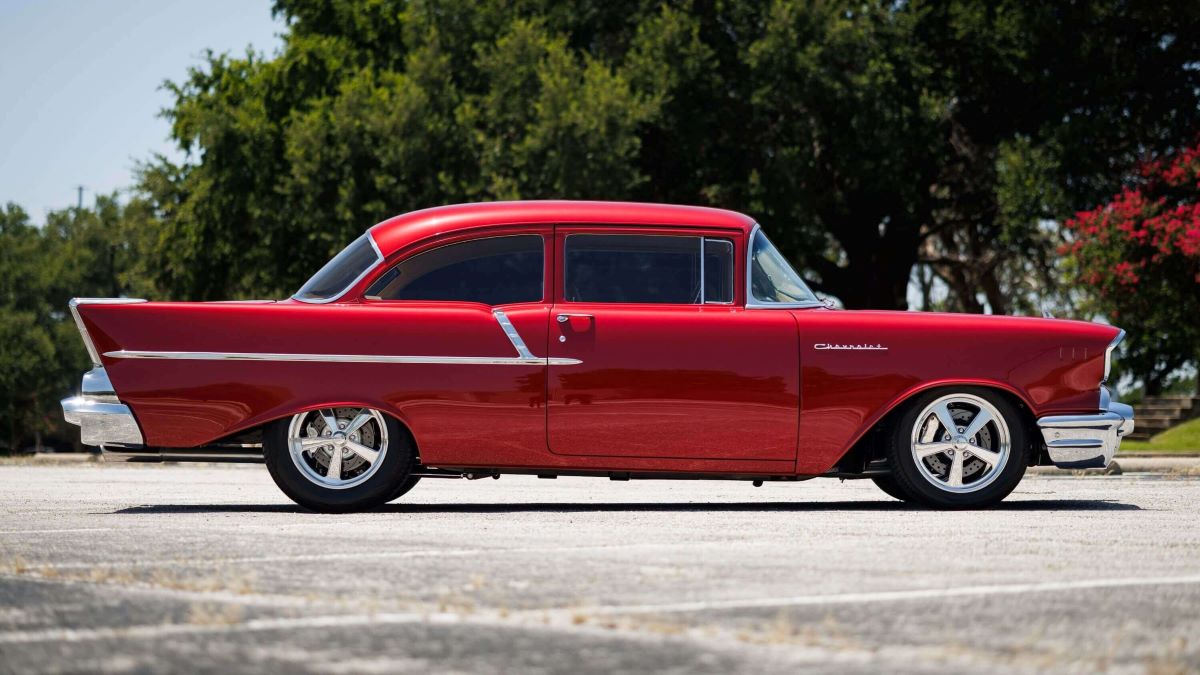
So what are you waiting for? Your chance to own the ultimate Tri-Five is just one lucky ticket away.
Enter now to win this $400,000, 620-horsepower ’57 Chevy Restomod.
Right now on AutoHunter, you can find this 6,331-mile 2023 Cadillac CT4-V Blackwing, which is powered by a twin-turbo 3.6-liter V6 paired with a 10-speed automatic transmission. Finished in Wave Metallic over a Natural Tan and Jet Black leather interior, this high-performance sport sedan is now offered by the private seller in Nevada with a window sticker, clean CARFAX report, and clear South Dakota title.
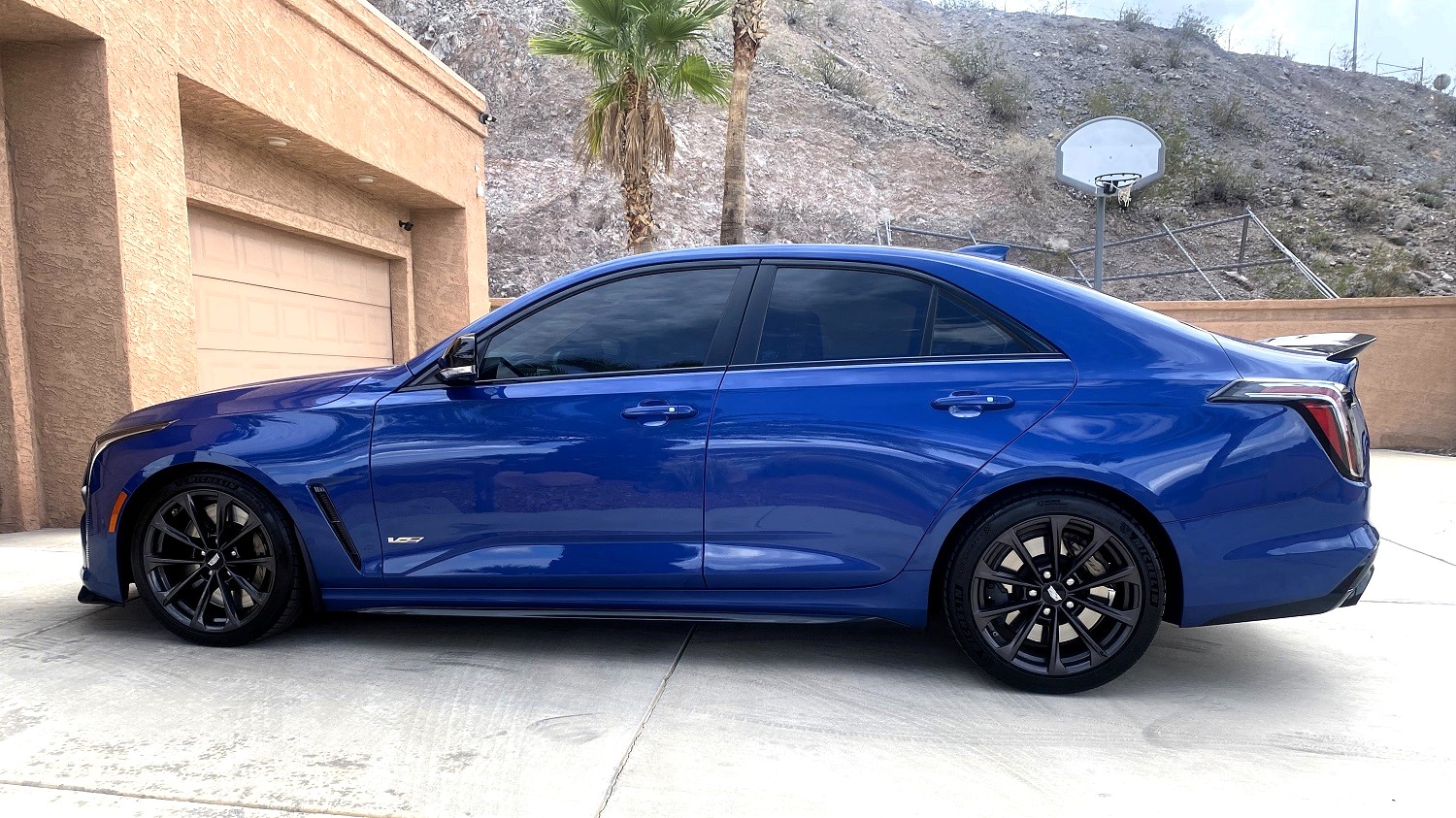
The Wave Metallic paint is accented with a black grille and matching side skirts, mirror caps, window trim, rear spoiler, and rear diffuser. Paint protection film was applied to the hood, mirror caps, and rear bumper. Additional exterior features include LED headlights and taillights, heated power mirrors, power sunroof, and quad exhaust outlets.
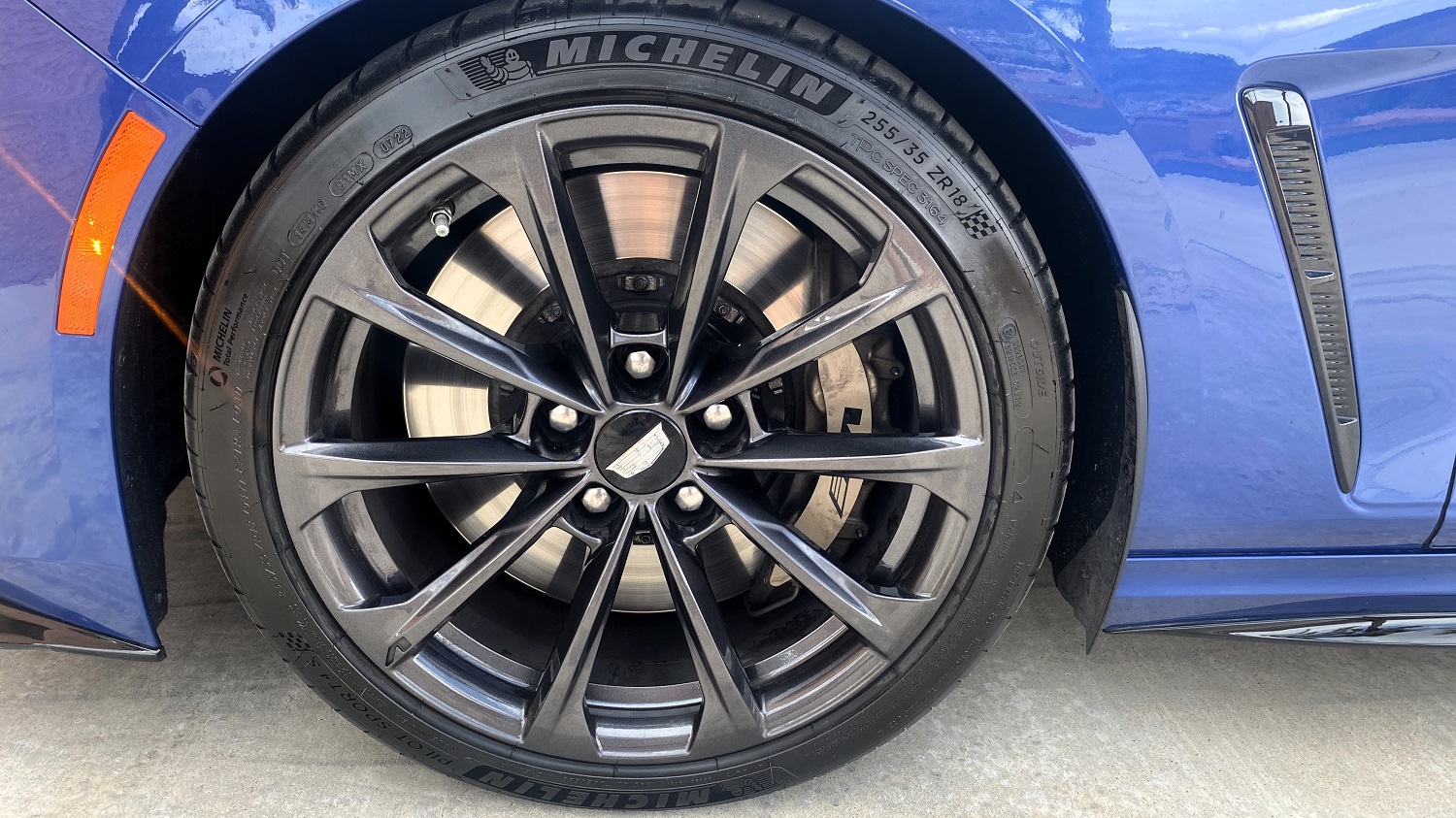
A set of 18-inch Satin Graphite wheels with 255/35 front and 275/35 rear Michelin Pilot Sport 4 S tires helps this Blackwing fly toward the horizon. Behind the wheels are Brembo power disc brakes with bronze calipers.
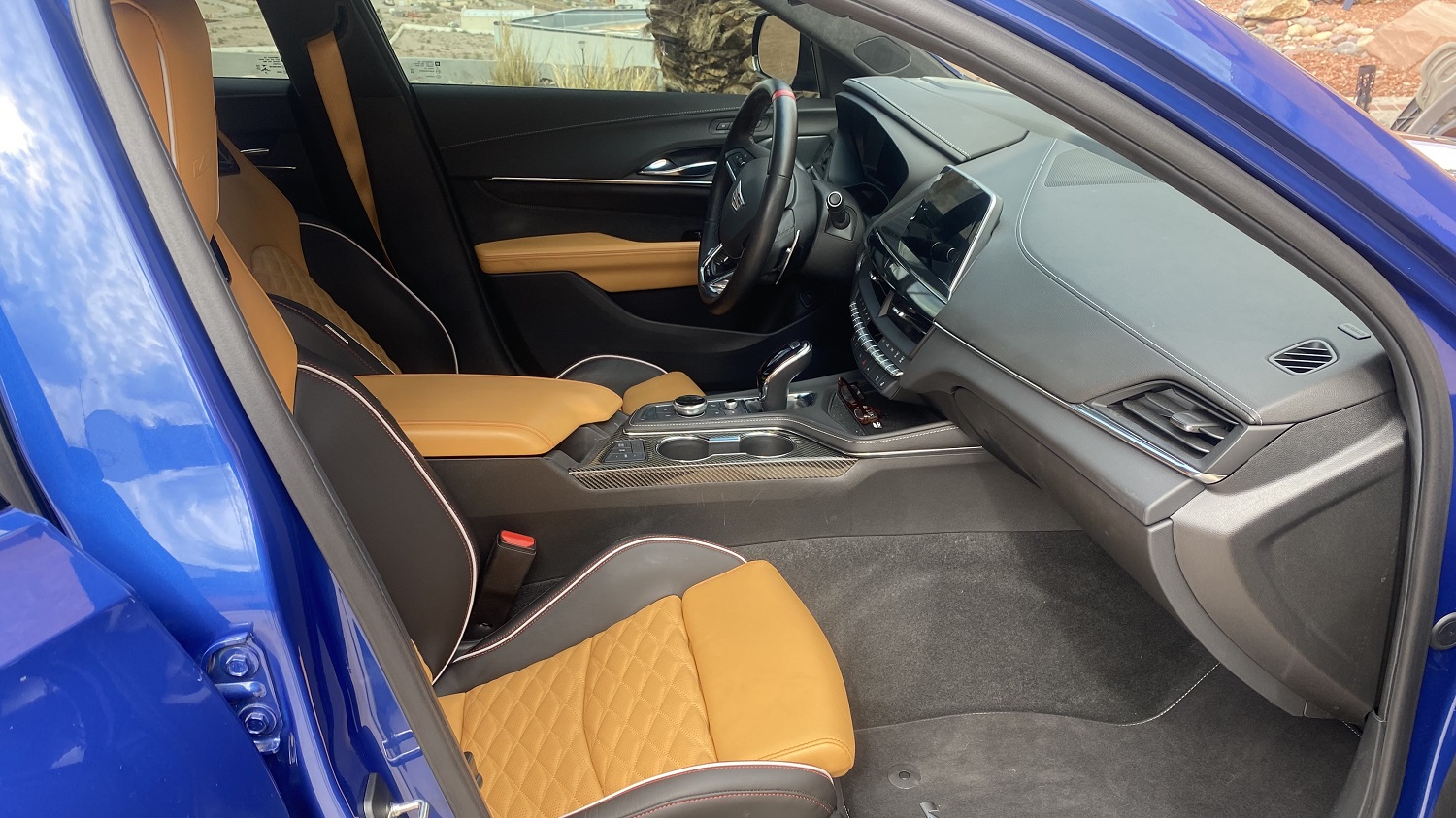
The cockpit is furnished with Natural Tan and Jet Black front bucket and rear bench seats. Comfort features include heated, ventilated, and power-adjustable front seats; heated steering wheel; dual-zone automatic climate control; and cabin air ionizer. There are also plenty of conveniences, such as keyless entry and start, head-up display, adaptive cruise control, 15-speaker AKG audio system, CUE infotainment with an eight-inch touchscreen and navigation, Android Auto and Apple CarPlay, and wireless phone charging.
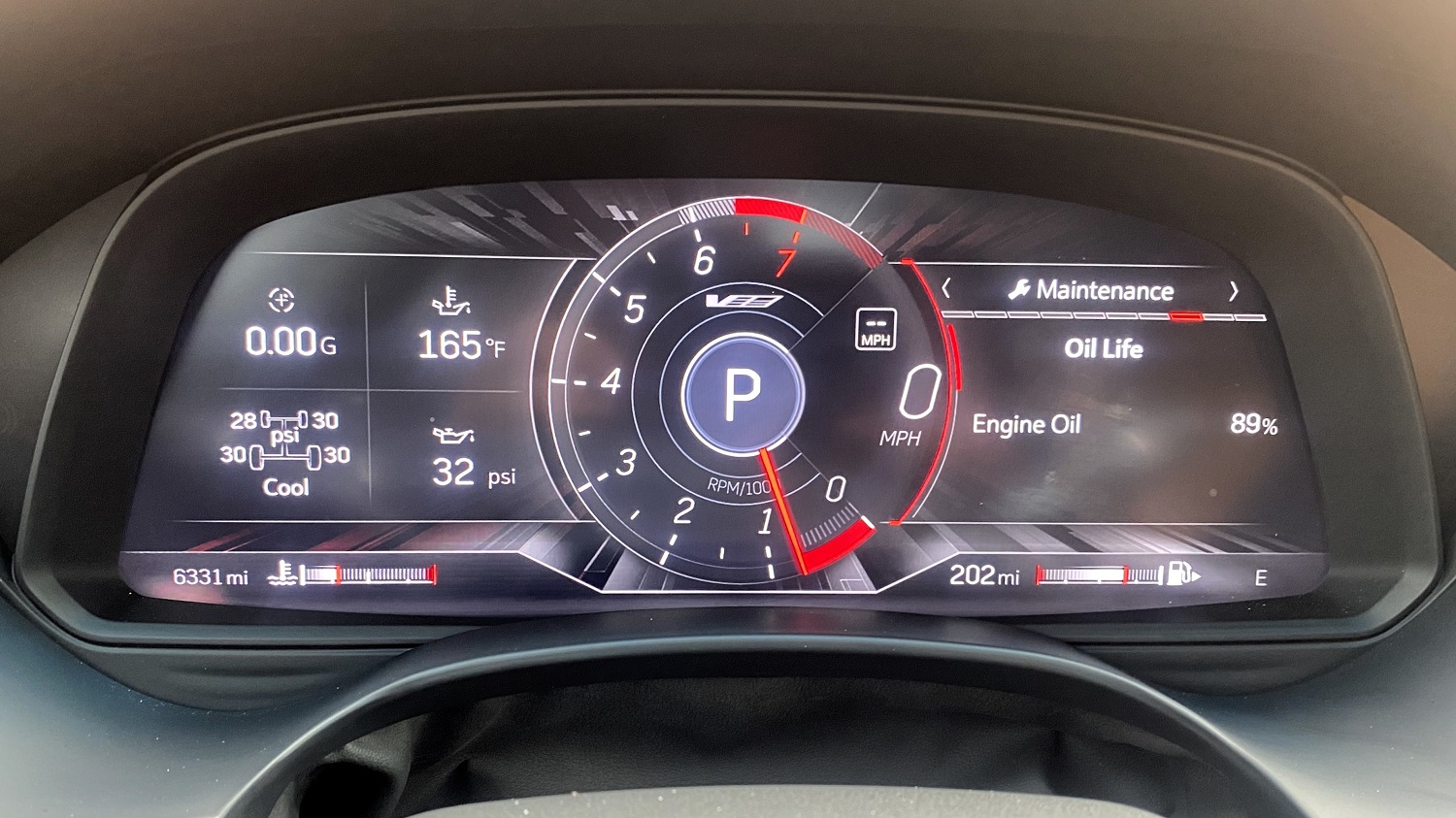
The configurable 12-inch digital gauge cluster displays the speed, revs, and information such as the engine temperature, g-force, oil pressure, and individual tire pressures. The digital odometer shows 6,331 miles.
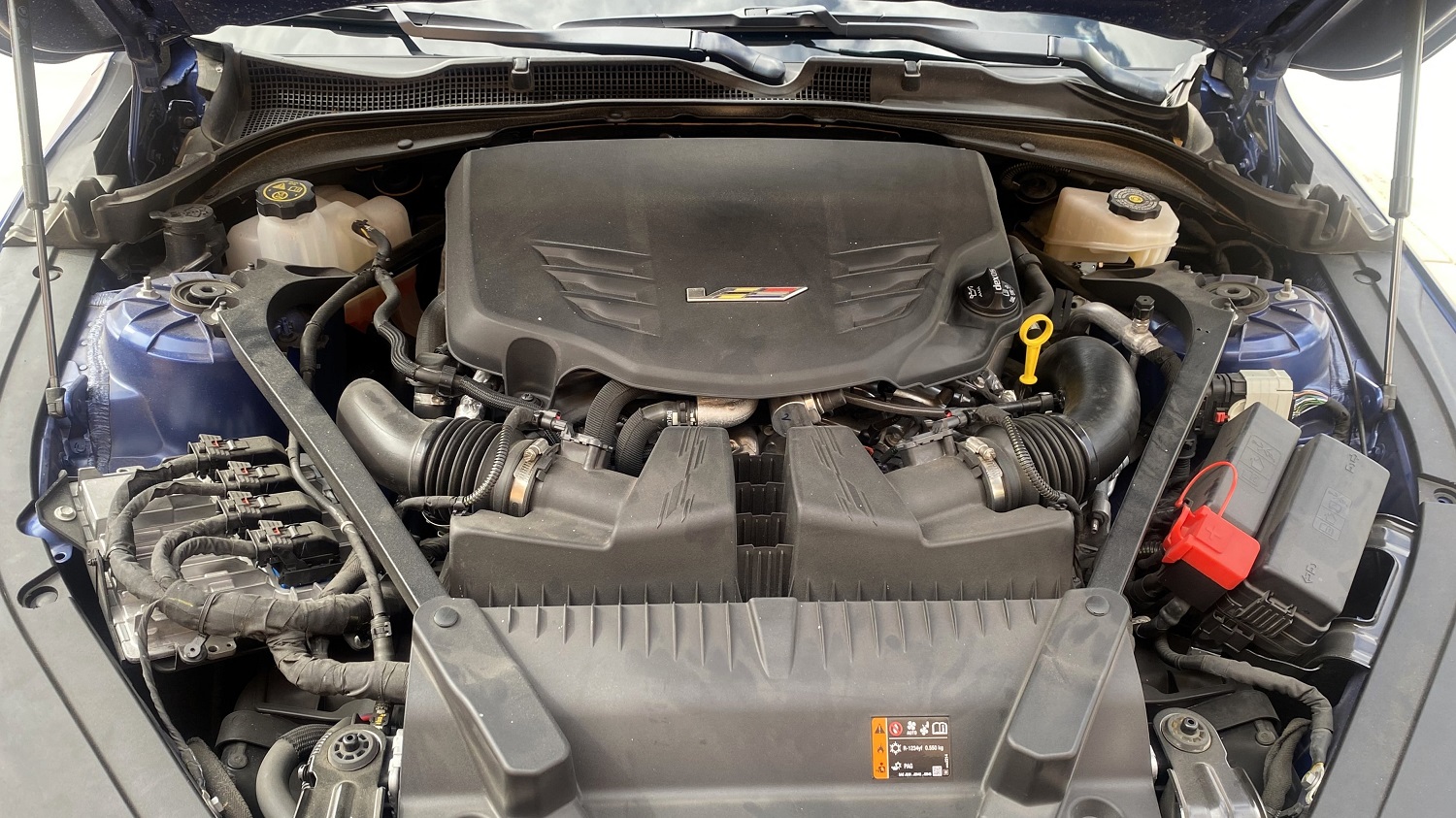
One of the biggest things that separates the Blackwing from the regular CT4-V is its twin-turbo 3.6-liter V6, which pumps out 472 horsepower and 445 lb-ft of torque. A 10-speed automatic transfers that output to the electronic limited-slip rear differential. Magnetic Ride Control soaks up bumps—and curves—in the road or track.
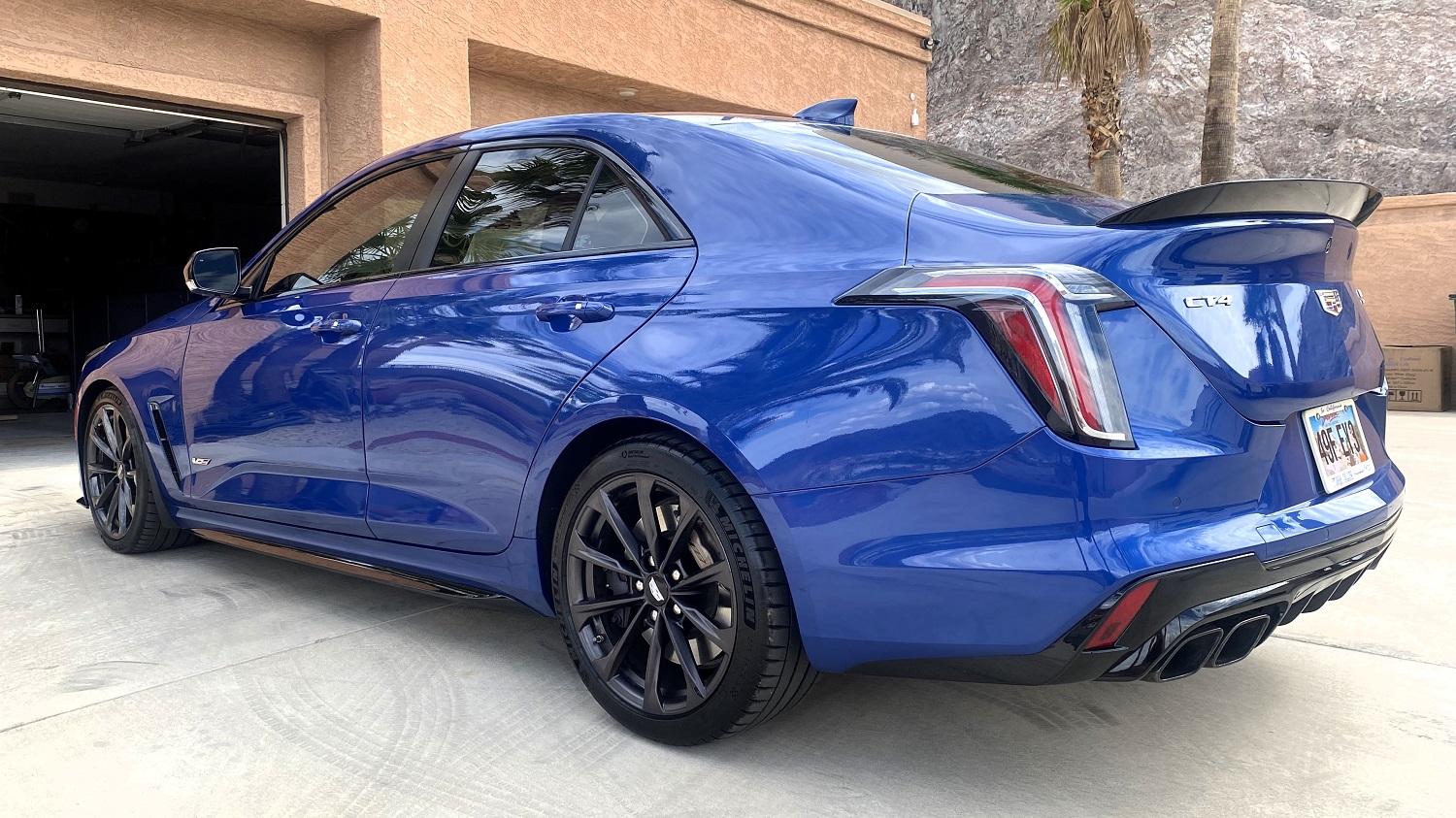
If you want to add this 2023 Cadillac CT4-V Blackwing to your automotive menagerie, bid on it right now. The auction ends on Tuesday, October 28, 2025, at 11:00 a.m. (PDT).
Visit the AutoHunter listing for more information and a photo gallery